-
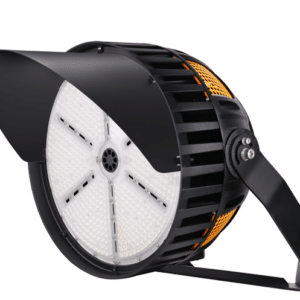
500w LED Stadium Light
$735.00 View product -
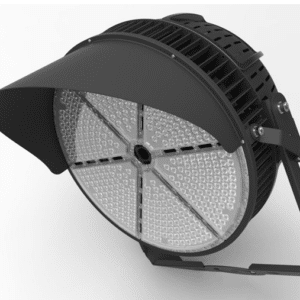
750w LED Stadium Sport Light
$1,104.60 View product -

Recreational LED Tennis Court Kit (4 Pole, 4 Fixture)
$11,932.00 Select options This product has multiple variants. The options may be chosen on the product page -
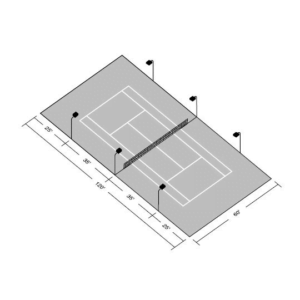
Recreational LED Tennis Court Kit (6 Pole, 6 Fixture)
$17,898.00 Select options This product has multiple variants. The options may be chosen on the product page -
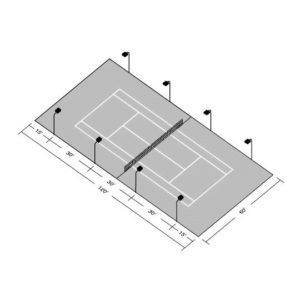
LED Single Tennis Court Tournament Kit
$18,486.98 Select options This product has multiple variants. The options may be chosen on the product page -
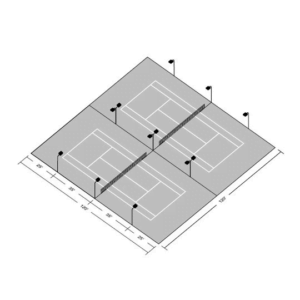
LED Double Tennis Court Recreational Kit
$25,827.98 Select options This product has multiple variants. The options may be chosen on the product page -
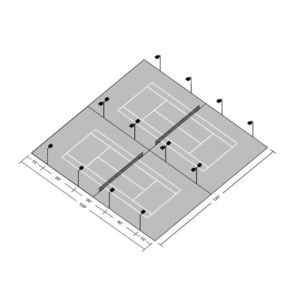
LED Double Tennis Court Tournament Kit
$34,436.98 Select options This product has multiple variants. The options may be chosen on the product page
One of the most important goals of your new lighting system is the ability to see and follow the ball consistently across the court. Properly designed tennis court lighting fixtures are typically forward throw fixtures which have precision optics or cut off characteristics which maximize light levels and minimize glare from the field of view.
Accomplishing Your Tennis Court Lighting Goals:
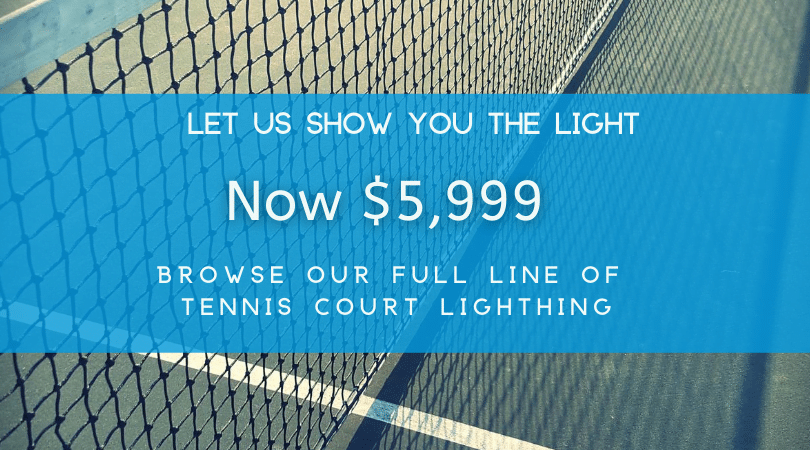
Identify Your Tennis Court Layout:
One of the first things in selecting proper tennis court lighting is to identify the size and layout of your court. Please click on one of the following links to see an illustration of your court.
Understanding the Lingo of Tennis Court Lights:
The quality of the light is best understood by learning some basic lighting terms known as Foot-Candles and Color Rendering Index.
Foot-candles are defined as the measurement of light output in candela per square foot. It derives from the early English unit of foot-candle defined as the luminance on a surface placed one foot from the standard candle. For most residential tennis court lighting projects a level of 60-75 average foot candles is considered a minimum and 75-100 average foot-candles is sufficient for most applications.
Color Rendering Index or (CRI) is defined as how well a light source renders color as compared to daylight. This can only be used to compare light sources with the same color temperatures. A CRI of 100 would indicate the light renders the same as daylight at the same color temperature. A CRI in the upper 90’s is considered the best assurance that the light source will render all colors properly. A 1000 watt Metal Halide source has a CRI 0f 65.
-
Tenon – An arm-like projection shaped for insertion into a sleeve or light fixture.
-
Lamp – A source of light. Also known as a light bulb.
-
H.I.D. – A High Intensity Discharge lamp (i.e. Mercury Vapor, Metal Halide, High Pressure Sodium).
-
Ballast – A device that starts and controls electricity for H.I.D. and Fluorescent lamps.
-
E.P.A. – A number system which determines how many fixtures and accessories may be placed on a pole.
Tennis Court Fixture Mounting Methods:
In tennis court lighting you have low-mast and high-mast pole configurations to consider when making your selection. Most residential tennis court lighting is low-mast lighting and high mast lighting is used in areas where higher light levels are required. Low-mast systems used in conjunction with sharp cut-off luminaries produce good uniformity, low glare, reduced amounts of spill light and are relatively easy to maintain. Click here to learn more technical information about the poles we sell and which one is right for your area.
Picking the Right Tennis Court Light and Orientation:
Many factors go into selecting the right lighting system for your tennis court or sport field application. Some of those factors include a uniform distribution of the light and non-glare optics. Good tennis court lighting should illuminate the entire court including approximately 6’ outside the sidelines and approximately 10’ behind the base lines. Metal Halide luminaries are the most common HID source used in tennis court lighting. Residential Landscape Lighting & Design is committed to making your tennis court lighting project a success. For your convenience, we have created tennis court lighting packages specifically approved and designed for six standard tennis court layouts.Please click on one of the following links to see your tennis court lighting package:
| Standard Tennis Court Layouts | Dimensions | Packages |
| Single Recreational & Residential Court | 120’ L X 60’ W | Court 1 |
| Dual Recreational & Residential Court | 120’ L X 120’ W | Court 2 |
| Single Tournament & Club Court | 120’ L X 60’ W | Court 3 |
| Dual Tournament & Club Court | 120’ L X 120’ W | Court 4 |
| Dual Narrow Recreational & Residential Court | 120’ L X 108’ W | Court 5 |
| Dual Narrow Tournament & Club Court | 120’ L X 120’ W | Court 6 |
Periodic Tennis Court Lighting Maintenance:
All sport lighting fixtures should be cleaned periodically to maintain good performance. When cleaning the lenses use a damp cloth to eliminate static electricity and the accumulation of dust on the lens. Always wear gloves when handling the lamp since oil from your hands can significantly reduce their efficiency and average lamp life. You can lose up to 30% of the useful light if you don’t clean your fixtures regularly. It’s a good idea to change your lamps at 75% of their rated life to maintain optimum light levels. The average lamp life for a 1000 watt metal halide lamp is 10,000 hours.
Concrete Footings and Base Covers:
The amount of concrete needed will depend on many factors. The size of the pole and the soil content of your installation site are two important aspects that structural engineers consider when determining the diameter and depth of the concrete footing. A 20 foot pole generally requires a footing with a diameter of 18 inches and a depth of 4 feet.
The base cover is a square and measures 4″ in height, so the anchor bolts should protrude 3 3/4″ above the concrete footing.
Special Note:
This information is intended for use by architects, engineers, contractors and tennis court or sport field owners. We encourage you to consult a licensed professional to discuss proper installation methods and codes for your area. Variations in climate, soil conditions, topography and other factors may make these unsuitable for your application.
| Standard Tennis Court Layouts | Dimensions | Packages |
| Single Recreational & Residential Court | 120’ L X 60’ W | Court 1 |
| Dual Recreational & Residential Court | 120’ L X 120’ W | Court 2 |
| Single Tournament & Club Court | 120’ L X 60’ W | Court 3 |
| Dual Tournament & Club Court | 120’ L X 120’ W | Court 4 |
| Dual Narrow Recreational & Residential Court | 120’ L X 108’ W | Court 5 |
| Dual Narrow Tournament & Club Court | 120’ L X 120’ W | Court 6 |
Tennis court lighting is one of the best ways to enjoy your sport and maximize your outdoor investment throughout the year. There is nothing more frustrating to suspend play in the middle of a match because you can’t see to hit the ball.
Residential tennis court lighting has come along way over the years and thanks to organizations such as the United States Tennis Court & Track Building Association specific guidelines and standards have been established. The following information highlights some of those recommendations and is intended as a guide to assist you in purchasing the right lighting system for your tennis court layout.
We recommend that you install underground wiring in conduit between poles and back to the power source for future maintenance on all tennis court and sport lighting applications. Always select the highest voltage available to operate your system to prevent voltage drop. All our tennis lighting fixtures are equipped with multi-tap ballast that operates at 120, 208, 240, or 277 volts. Maintaining good voltage will prevent poor lighting performance and improve energy consumption. All wiring must comply with the National Electrical Code and local electrical ordinances. Consult with a local electrician or engineer for conduit size, wire size, circuit information, and switching options.
Shop Our Catalog For: Sports Field & Athletic Lighting






